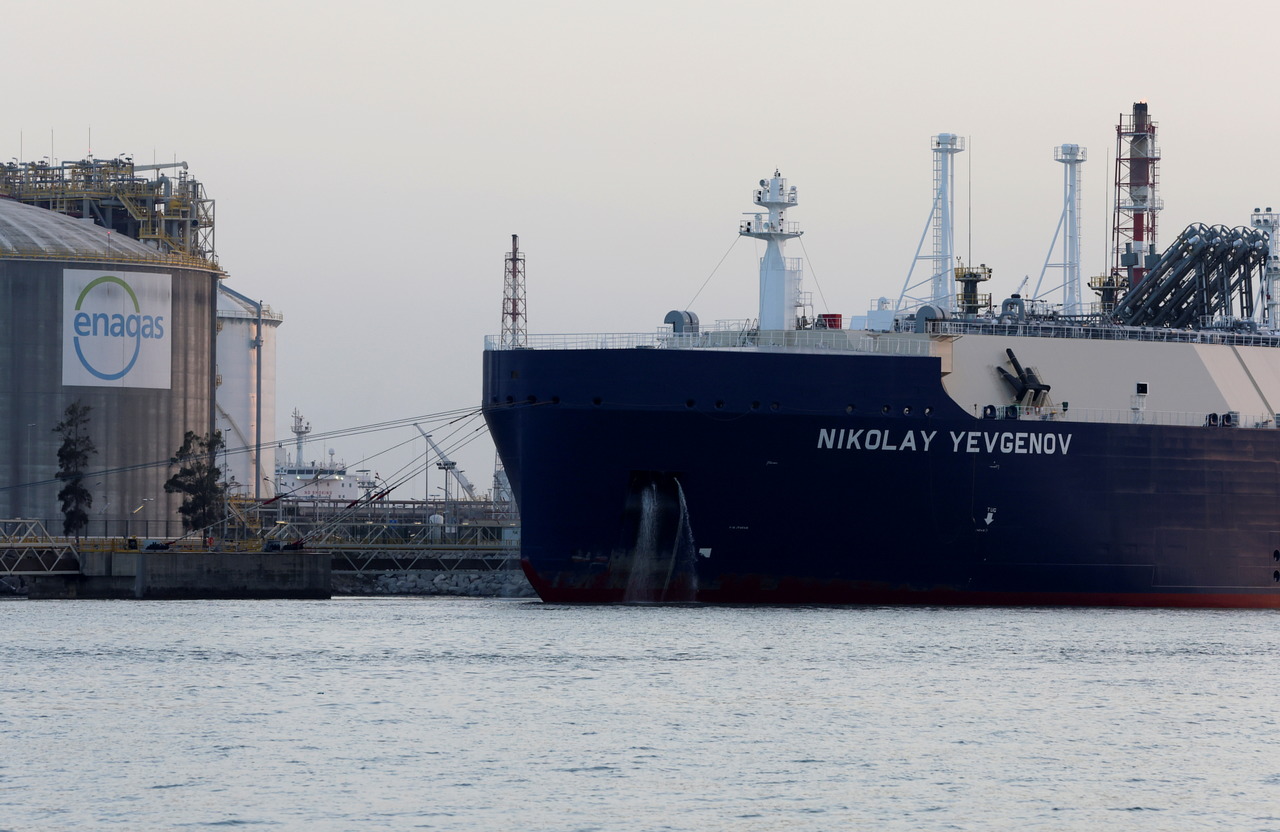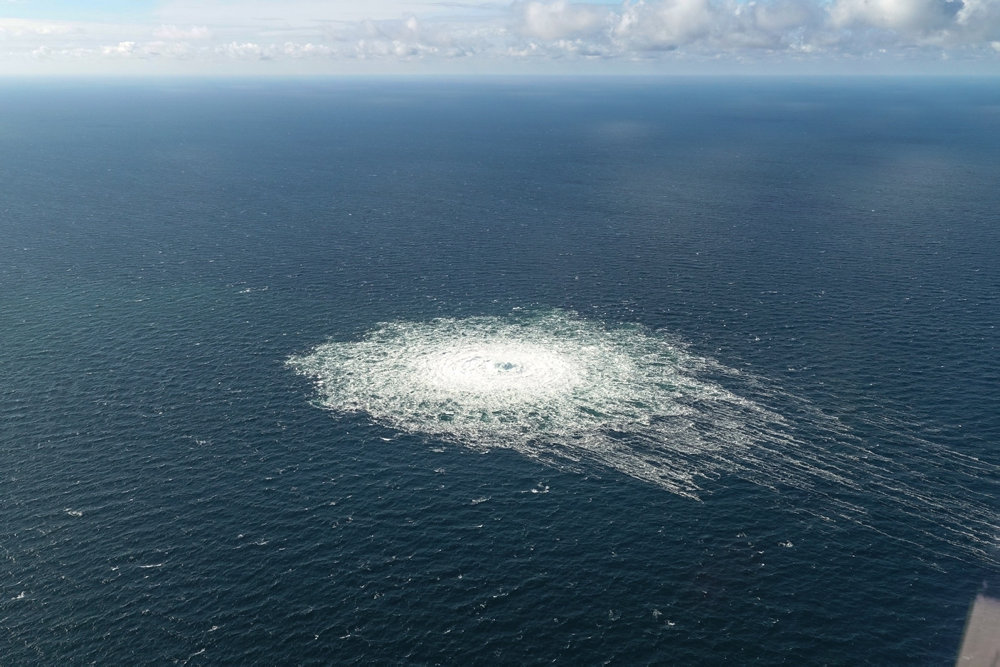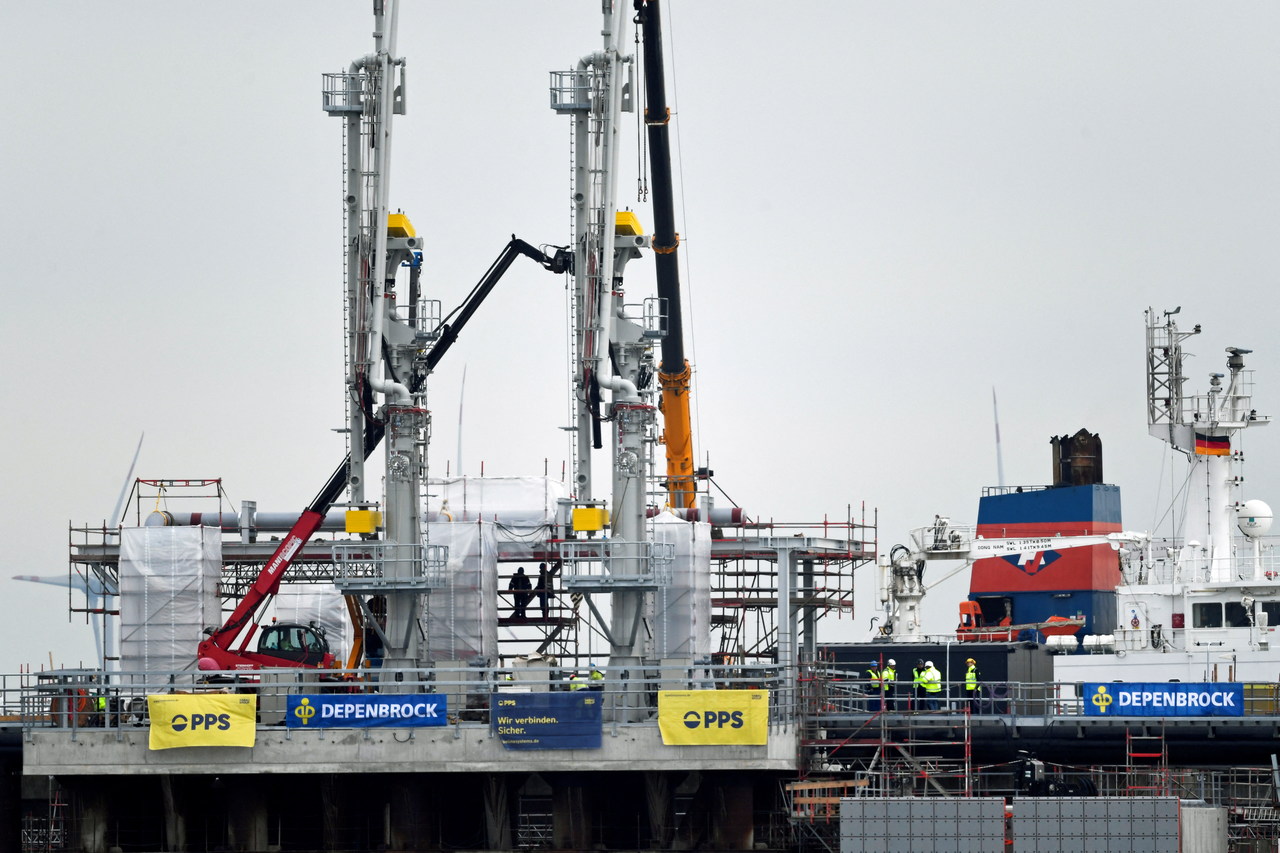EU Still Receiving Russian LNG
Even without an EU ban on the imports of Russian gas in 2022, pipeline deliveries fell by over 80%. However, this did not eliminate the EU’s dependence on gas from Russia because at the same time, the Union recorded a record increase in LNG imports from this country. This trend goes against the EU’s efforts to diversify supply directions. It is important for the European Commission (EC) to encourage the Member States more strongly to abandon Russian LNG and strengthen European solidarity through joint gas purchases using the EU Energy Platform, as well as through the development of an LNG benchmark.
 NACHO DOCE / Reuters / Forum
NACHO DOCE / Reuters / Forum
Russian Gas Exports in 2022
Before the full-scale invasion of Ukraine in February 2022, Russia was the largest gas supplier to the EU, accounting for over 40% of supplies (in 2021, 155 billion cubic metres, or bcm, of which 142 bcm arrived via gas pipelines). The invasion led to a break in relations between the EU and Russia, including gas relations. In the first quarter of 2022, hoping to provoke divisions in Europe and force EU countries to stop supporting Ukraine, Russia reduced gas supplies to the EU by about 57%. This was primarily the result of Gazprom’s unilateral decisions to reduce or suspend exports via gas pipelines. The Russian supplier, under the pretext of Poland and Bulgaria refusing to pay for gas in roubles, cut off supplies to them in April 2022. Then, it cut deliveries of pipeline gas to Finland, the Netherlands, Denmark, and Sweden. In June, while invoking technical problems, it reduced the daily transit of gas through the Nord Stream 1 (NS1) pipeline by 60%, and then suspended it twice under the pretext of pipeline maintenance. An underwater explosion that hit both NS1 and NS2 in September last year deprived Germany of a direct pipeline connection to Russian gas. These circumstances meant that the share of Russian gas in the EU gas market decreased in the subsequent quarters of 2022 to 23% in Q2, to 11% in Q3, and below 10% in recent months.
Ending Dependence on Russian gas
The EC and the Member States developed a joint response to the Russian actions. To offset the sharp drop in supply and prepare EU members for possible supply cuts, in May 2022 the EC announced the RePowerEU package, which encouraged the members to reduce imports of fossil fuels from Russia, reduce energy consumption, find alternative sources of supply and accelerate deployment of renewable energy sources (RES). The EC also increased the requirements for filling gas storage facilities to 80% by 1 November 2022 and 90% by 1 November of each subsequent year. It also established the EU Energy Platform to coordinate and strengthen contacts between the Member States and gas suppliers.
A regulation issued in December 2022 obliges EU countries to report, starting in 2023, as part of the demand aggregation process, the amount of gas corresponding to 15% of their individual storage obligations (about 13.5 bcm for the entire EU). The solution makes it possible to purchase gas jointly via an aggregated demand model via the platform. Aggregating demand can improve the EU’s negotiating position. The regulation also tasked the EU Agency for the Cooperation of Energy Regulators (ACER) to prepare by the end of March 2023 a new benchmark for LNG by analysing daily data from market participants. So far, standard benchmarks for wholesale prices of pipeline gas and LNG have been linked to the Dutch TTF gas exchange, which is characterised by high price volatility. The new EU benchmark for LNG is intended to reflect real LNG prices. Greater price transparency will allow for better coordination of purchases, preventing the Member States from outbidding each other and consequently lowering wholesale prices.
EU countries have accelerated the diversification of the directions and sources of supplies, intensifying cooperation with, for example, the U.S., Norway, and Gulf states. The EU’s energy security has also been enhanced by the commissioning of projects such as the Polish-Danish Baltic Pipe, the gas interconnections between Poland and Slovakia and Poland and Lithuania, and two of the five planned German floating LNG terminals. The effects of the diversification of supply sources were already visible in Q3 2022 when about 34% of total gas imports from outside the EU came in the form of LNG, which became the most important source type in EU imports, ahead of pipeline gas. In total, according to estimates, LNG imports to the EU were to increase by over 70%, from around 88 bcm in 2021 to 155 bcm in 2022.
The Other Side of the Coin—Russian LNG
Despite the decline in imports of Russian pipeline gas to the EU, imports of LNG from Russia in 2022 more than doubled year on year. In Q1 and Q2 2022, Russia was the second-largest supplier after the U.S., accounting for over 18% of LNG imports, while in Q3 it was surpassed only by the U.S. and slightly by Qatar. In total, in the first three quarters, EU members imported 16.5 bcm of Russian LNG (about 4% of total EU consumption in 2021), spending a record €12.5 billion due to the high prices, which were five times more than the year before. Russian LNG was an important source of supplies for the main European LNG importers, most notably Spain, France, Belgium, Italy, and the Netherlands. For example, in Q2 2022, as much as 50% of total LNG imports to Belgium came from Russia. In the first three quarters of 2022, the share of Russian LNG in total imports to France ranged between 20% and 30%.
The expansion of Russian LNG on the European market is part of Russia’s plan to achieve a 20% share of this global market by 2035. Its goal was to be achieved by increasing supplies to the EU and expanding the infrastructure for its production and transport. Since 2017, Russia has built three liquefaction terminals: Yamal LNG (located in northwestern Siberia where most of the LNG exports to Europe currently come from), Vysock LNG (both controlled by Novatek), and Portovaya LNG (owned by Gazprom). Russia also sought to involve Western European companies in its investments, especially French TotalEnergies, Dutch Shell. and British BP, in order to obtain capital and technology as well as potential recipients. Shell and BP withdrew from the Russian energy sector after the start of the 2022 aggression against Ukraine. Under pressure from public opinion, TotalEnergies only in December last year resigned from its shares in Novatek and withdrew its representatives from the company’s management board. However, it still holds a 20% stake in the Yamal LNG and Arctic LNG 2 projects (planned to be commissioned in 2023).
Conclusions and Perspectives
Although the cut-off of pipeline supplies to Germany, where the largest volumes of gas were still arriving at the beginning of 2022, has contributed to a spectacular decline in the share of Russian gas in the European market, there is a risk of some Member States maintaining gas dependence on Russia. The increase in the share of Russian LNG in the European market allows Russia the opportunity to conduct energy blackmail tactics, such as failure to fulfil orders or further attempts to extort payment in roubles to prop up its economy. This poses a threat to the security of supply, especially in the context of the possibility of a supply gap on the gas market in the coming seasons. Moreover, by importing LNG from Russia, EU countries are limiting the effectiveness of the economic sanctions, undermining the credibility of the plan to abandon Russian energy sources. It is also a sign of fractures in EU solidarity that Russian propaganda can exploit. Poland and other states have proposed sanctions on all Russian gas, but did not gain unanimous support from EU countries (opposed by Hungary and some others).
Forecasts of the global LNG market indicate that competition for supplies will be even more intense as the Chinese economy returns to a path of rapid growth after the COVID-19 pandemic. On the one hand, it is important that the EU countries remain united in the face of the expected increase in prices on the LNG market and little ability to influence supply. On the other hand, it will be crucial to respond by accelerating the development of RES. The growing importance of LNG in the European energy mix and the development of a strategic partnership with the U.S. should go hand in hand with the principle of solidarity in developing an LNG benchmark and aggregating demand through the implementation of instruments like the common EU Energy Platform. The next winter will allow an evaluation of the effectiveness of these solutions. The EU countries should consistently move away from Russian energy resources, including LNG, according to the RePowerEU plan. For Poland, it will be important to show the risks associated with dependence on Russian hydrocarbons while it develops its own energy independence based on nuclear and RES.


.png)


